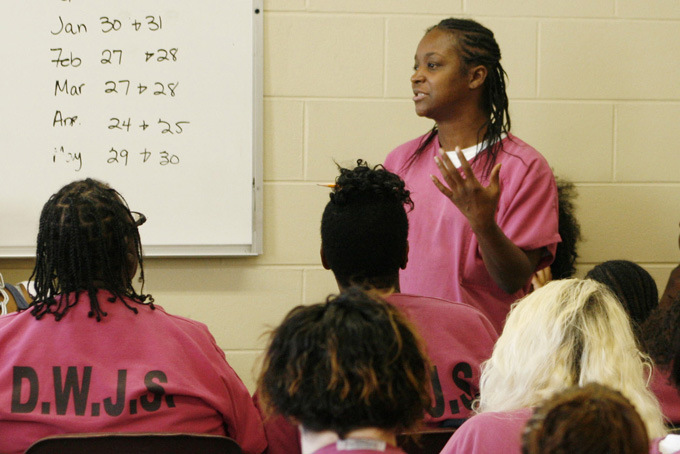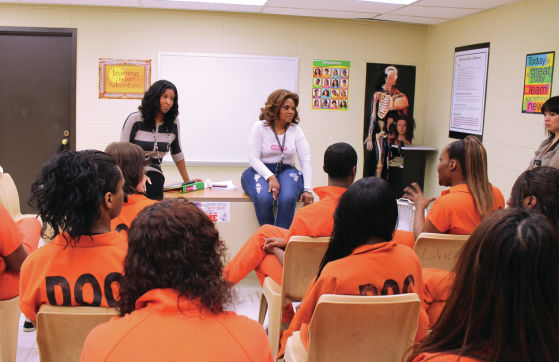World News – Once a week, a large room inside Division 17 of the Cook County Jail is packed with women. They’re here for a meeting of Prostitutes Anonymous and are greeted by Lisa, the meeting coordinator.
 “Welcome to Prostitutes Anonymous where we learn not to sell ourselves, right?” Lisa asks the group.
“Welcome to Prostitutes Anonymous where we learn not to sell ourselves, right?” Lisa asks the group.
“Right,” the women respond.
These women may not be in jail on a prostitution charge, but they have all been touched by it in some way. They allowed NBC 5 Investigates exclusive access to the meeting and some even agreed to be identified.
It doesn’t take long to learn about the dangers many of the women faced. Kelli, 28, tells of nearly being killed by a customer or “john” with a gun. She says he hit her 20 times in the face with the gun, knocking most of her teeth out.
“I’m dealing with that shame right now,” Kelli said.
The conversations also highlight struggles with drug abuse, which almost always goes hand in hand with prostitution.
Lisa, who asks we only use her first name, says “being in a room with numerous tricks doing things to you, pissing on you … you have to be pretty high to do those things!”
So what leads a woman to prostitution in the first place? One study of women in the Cook County Jail by the Chicago Coalition for the Homeless found an overwhelming majority of trafficked or prostituted women have experienced domestic violence (86 percent), sexual assault (74 percent) or some form of child abuse (63 percent).
One unidentified woman in Division 17 talks about first prostituting in the 4th grade.
“I was like cool, he wanted to give me some money and I didn’t know about prostitution,” she said.
Brenda Myers Powell, another meeting coordinator, talks about trying to get the women to first understand exactly what prostitution is — trading sex for anything of value — and then dealing with what got them there. From that point, they work on giving them tools to stop them from going back.
She likens the emotional process to “peeling back layers.” About the young woman who started prostituting in the 4th grade she says, “how many layers do we have to pull off that young lady before she becomes new again”?
But Brenda Myers Powell and her colleague, Lisa, know that it is possible to pull back those layers and achieve recovery. They are both former prostitutes who have made it out and are here to give back, and Lisa says it gives the women hope to see them.
“It’s important to show the women that I’ve been there, done that, and that what I’m doing now, they are able to do,” Lisa said. “Recovery is possible.”
There are roughly 150 to 160 women housed at Division 17 at any given time. They are mostly non-violent offenders, some in pre-trial phases, some sentenced to be there. In 2009 Dart expanded on programs at Division 17 and added others outside the jail as part of the Women’s Justice Program.
It encompasses parenting classes, yoga classes, contact visits with children, GED preparation and therapy sessions, among other programs.
Cook County Sheriff Tom Dart calls it a holistic approach “to attempt to tackle all of the different issues that [are] impacted,” because “for many of these women their life stories are literally horror stories.”
One of the programs outside of the jail involves the human trafficking response team. Brenda Myers Powell, Lisa and a third former prostitute, Marian Hatcher, are part of the team.
They’ll work with the Cook County Sheriff’s Vice Department on stings to bring prostituted and trafficked women in and hopefully get them services. Here they are not treated like criminals, but like victims.
“You offer them help,” Marian says. “They don’t always take it then.”
They call it an intervention, and according to Cook County’s own records, 76 percent of the time when help is offered, it is accepted.
“Sometimes it is years later, but we are always here to help,” Marian says.
By Marion Brooks, From NBC Chicago

